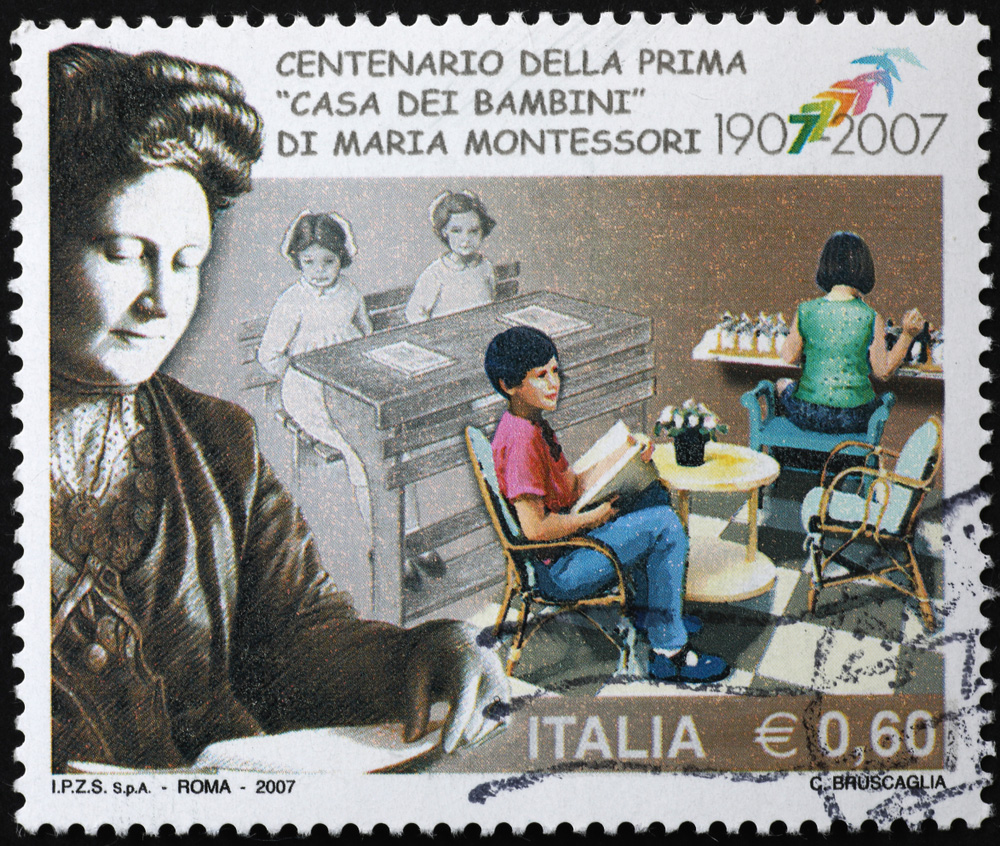
Maria Montessori, an Italian physician-educator, developed the Montessori approach. Dr. Montessori, working with under-privileged children in the 1900's, discovered that young children become absorbed in a serious interaction with specialized manipulative materials. Through the interaction and experience in her prepared environment, the children developed an extraordinarily high level of intellectual and social ability at young ages. Expanding her study of the young child, she gradually refined her approach to all child development areas through her experience and research in countries as diverse as Spain and India until the time of her death in 1952.
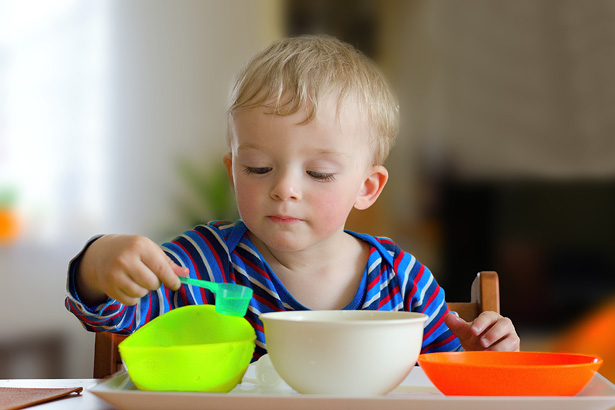
The Montessori Method is now being successfully implemented with children in nearly every country of the world. The Montessori Method became a significant influence in the United States in the early 1960's, when parents and educators began to appreciate the importance of early childhood education. Today there are more than 6,000 Montessori programs in this country, which have a tremendous influence in all facets of American education. The Montessori Method is applied most frequently in pre-school and elementary education grade levels. Montessori education has no religious affiliation, is not therapy, nor is it an approach useful only with certain categories of special children. The Montessori Method is effective in pre-school, elementary school, and high school. Of late even public schools are adapting Montessori philosophy within their curriculum.
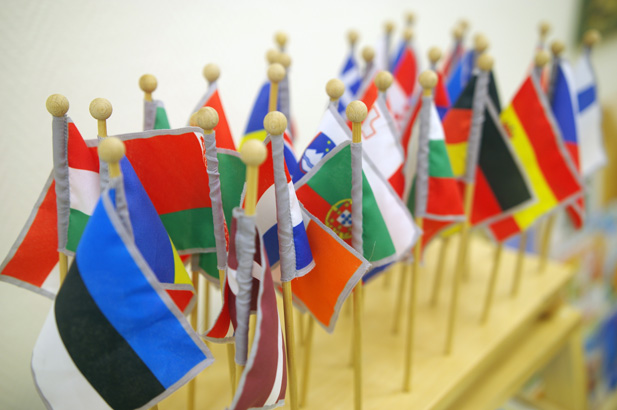
Our care of the child should be governed, not by the desire to make him learn things, but by the endeavor to keep burning within him that light which is called intelligence.” This quote by Dr. Montessori, beautifully encompases the her philosophy of early child development.
Montessori education is based on the ability for children to absorb and learn from their classroom, school and surrounding environment with the careful guidance of teachers and other experts. Utilizing the natural tendencies and developmental characteristics of children and young adults, teachers/caretakers help develop learning opportunities that lead from children's curiosity and exploration. Through precise observations, the teacher is able to introduce lessons and experiences when the child's attention, interest level and receptiveness are at his or her peak.

The goal of Montessori education is to aid each human to find his/her place in the universe with a sense of joyful duty and to contribute to the advancement of civilization. The Montessori Method of education plays a supporting role to the philosophy, which is more than just a method employed for acquiring practical information or attainment of intellectual powers. It is a set of beliefs dedicated to understanding the importance of the human spirit; a way of thinking and doing that creates a passion for life, a path to inner peace through development of a healthy self for the purpose of service to others.
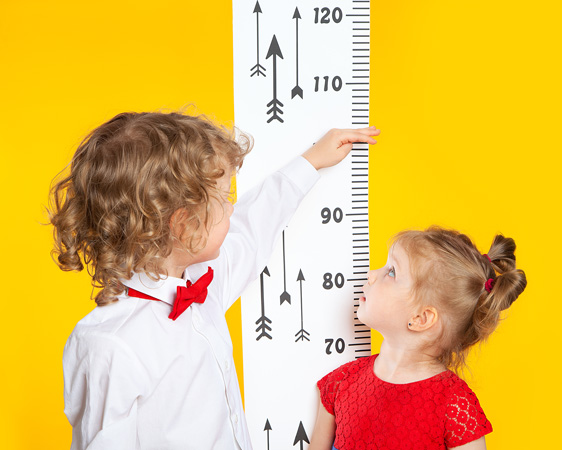
Dr. Montessori developed her educational philosophy because of observations and discoveries she made of the ways in which children learn. She found that they learn in distinctly different ways at different stages of development. She formulated an educational program to meet the particular needs of the child at whatever stage of development, to help him/her reach his/her fullest potential. Dr. Montessori preferred not to call this a "method,‖ but an "approach" to life.
Through her scientific acumen, Dr. Maria Montessori, observed children, that led her to develop educational theories best suited for supporting and advancing the unique needs of children. She understood that children are different from adults and identified sensitive periods in the development of children. She proposed that the goal of early childhood education is to cultivate the child's own natural desire and ability to learn, including respect for the individual, others, and the environment.
The Montessori environment is a highly social one in which the children are continually interacting with and caring for each other. They are proud of their environment because they are directly involved with caring for it and contributing to it. There is a great deal of material available to them concerning all areas such as practical life, sensorial, language, math, movement, plants, and animals throughout the world. Artists and musicians are represented through reproductions and recordings of their works, and children enter the world of the arts through participation in arts and crafts and musical activities.
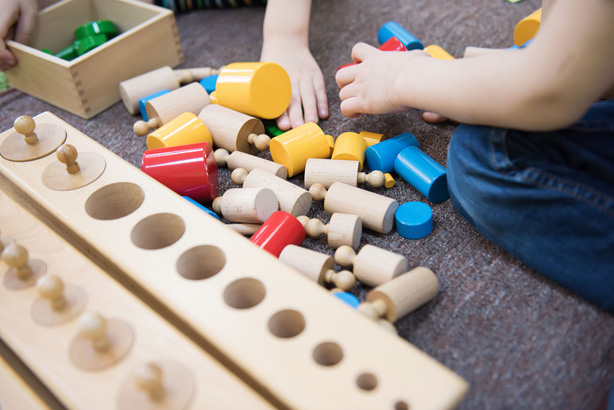
A unique characteristic of a Montessori classroom is multi-age grouping. Classrooms are designed to meet the needs of a 3 year span. It is essential for the purpose of constantly challenging and stimulating the children to develop interests and skills they observe older children engaged in. The age appropriate materials are displayed with a sense of beauty and varied levels of difficulty. Each child moves through the sequenced material based on its own inner development and natural tendencies to self-perfect. An additional benefit of the multi-age grouping is the modeling the older children provide in the area of social and behavioral expectations. Because not all the children are one age, different strengths, as well as undeveloped tendencies, balance each other making way for the normalization process to unfold.
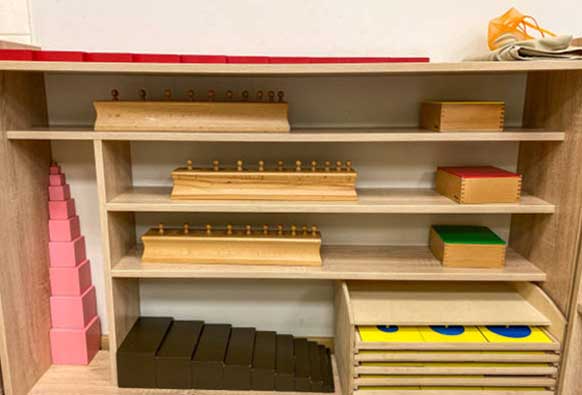
The materials in the classroom can be divided into five main areas. Activities with the materials involve both physical and mental action, linking body and mind. Practical Life-Exercises such as pouring, grating, polishing, sorting, washing, buttoning, etc. help the child learn to function in his own environment, and are preliminary to more advanced learning. The child develops an attention to details, a lengthened span of concentration, and muscular control and coordination through the successful completion of these basic exercises. Sensorial Activities are designed to isolate and sharpen each of the five senses. Grading and comparing sounds, sizes, colors, textures, and shapes help organize the impressions a child receives.
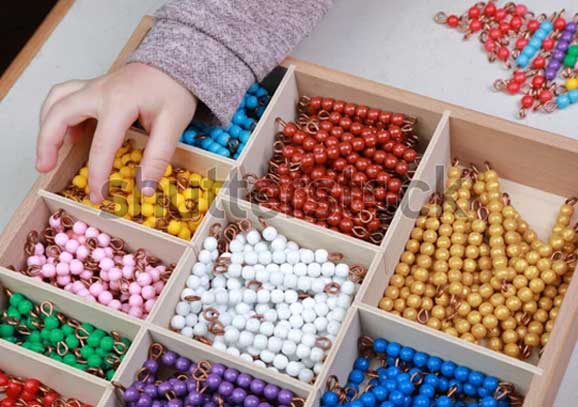
The materials have a built-in control of error so the child can correct his own mistakes. Sensorial materials are sequential and provide a foundation for mathematics and language. Language Materials are presented individually to take advantage of the greatest interest on the part of the child. Children are taught the sound and formation of the letters kinesthetically through the use of sandpaper letters and similar materials. Word building activities of increasing difficulty are done over a long period. Reading follows naturally. Mathematical Concepts are presented through extensive use of concrete materials. The child's sensorial training enables him to identify and differentiate the idea of quantity, which is built into the Montessori materials. The child gains the conception of number and its application on arithmetical operations. Geography, history, botany, biology, zoology, music, and grammar are introduced through the use of concrete materials. Through these materials, the child learns the correct terminology and develops the foundation necessary for future success in the sciences.
